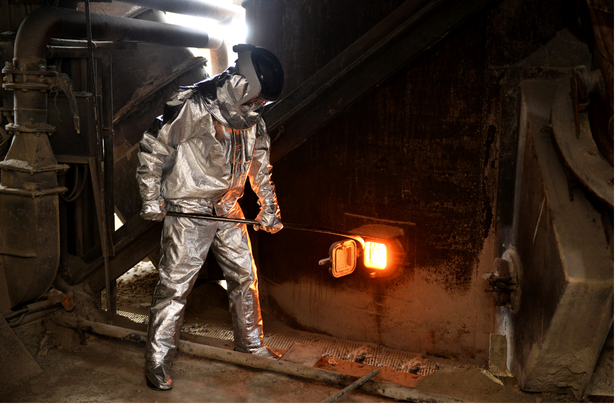In high-risk industries, ensuring the safety and protection of your workers is the most important step you can take. One of the most crucial elements in safeguarding employees from potential hazards, such as flames and extreme heat, is the use of appropriate protective clothing. Fire-resistant fabric plays a vital role in this regard, offering a layer of defence that can prevent severe injuries and save lives.
This blog will delve into a range of fire-resistant and flame-retardant fabrics, providing you with essential information to make informed decisions about your personalised workwear choices. By exploring the benefits of these materials, we’ll help you select a high-quality uniform that not only protects your workforce but also contributes to a greener future.
Whether you need fire-resistant high-vis workwear for industrial applications or specialised garments for firefighting, this comprehensive guide will help you choose the right fire-resistant fabric to meet your needs.
Understanding Fire-Resistant Fabrics
Definition
Fire-resistant fabrics are specially-engineered materials designed to withstand ignition and resist burning when exposed to fire. These fabrics are either inherently fire-resistant due to their chemical structure or treated with fire-retardant chemicals to enhance their resistance to flames. Flame-retardant fabrics, on the other hand, have been chemically treated to slow down or halt the spread of fire. Both types play a crucial role in enhancing safety in environments where exposure to fire is a significant risk.
Difference
While the terms “fire-resistant” and “flame-retardant” are often used interchangeably, they refer to different types of fabric treatment. Fire-resistant fabrics are inherently non-flammable due to their chemical composition; they do not easily ignite and will self-extinguish if they catch fire. Flame-retardant fabrics, on the other hand, are made from materials that are not naturally fire-resistant (such as cotton) but have been treated in a manner that inhibits the spread of fire.
Understanding this distinction is essential for selecting the appropriate protective clothing based on your specific workplace hazards.
Importance
The importance of fire-resistant fabrics in workplace safety cannot be overstated. In industries such as firefighting, oil and gas, electrical maintenance, and welding, workers are regularly exposed to high temperatures, sparks, and flames. Fire-resistant clothing provides a critical layer of protection, reducing the risk of burns and injuries. This protective gear can be the difference between a minor incident and a life-threatening injury, ensuring that employees can perform their duties with a greater sense of security.
Fire-Resistant Fabrics
Aramid Fibres
Aramid fibres such as Nomex and Kevlar are renowned for their exceptional heat resistance and durability. These synthetic fibres do not ignite easily and offer excellent resistance to high temperatures.
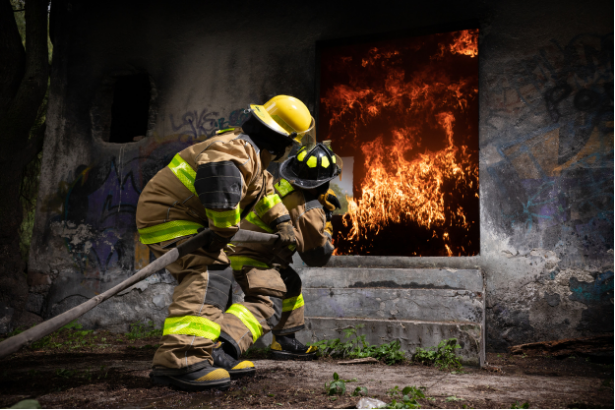
Nomex, in particular, is widely used in firefighting gear and military uniforms due to its ability to withstand intense heat and flames without compromising wearer safety.
Kevlar, known for its strength and lightweight nature, is also employed in protective gear where strength-to-weight ratio is critical, such as body armour.
Carbon Foam
Carbon foam is prized for its outstanding thermal resistance and lightweight properties.

This material can withstand extreme temperatures and is favoured in aerospace and specialised industrial applications where heat management is crucial. Its lightweight nature makes it ideal for applications where reducing overall weight is important without sacrificing thermal protection, such as in thermal barriers and insulation for aircraft components.
PBI (Polybenzimidazole)
PBI is known for its exceptionally high melting point and inherent resistance to combustion.

It does not burn or melt easily, making it suitable for extreme firefighting conditions and astronaut suits. PBI’s ability to maintain its integrity at high temperatures protects wearers from heat and flames, making it a preferred choice in environments where exposure to fire is frequent and intense, such as in space missions and structural firefighting.
Flame-Retardant Cotton (Treated Cotton)
Flame-retardant cotton, also known as treated cotton, combines the natural comfort and breathability of cotton with added flame resistance through chemical treatments. This fabric is comfortable to wear and cost-effective compared to some synthetic alternatives.
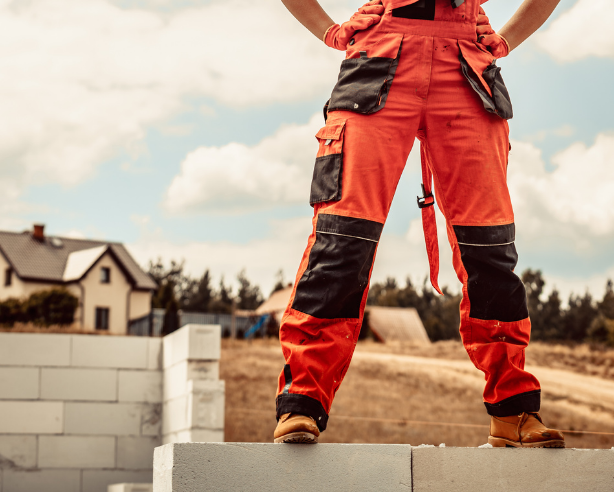
It finds widespread use in general workwear, where protection against flash fires and sparks is necessary, as well as in welding uniforms where both comfort and safety are crucial during hot work operations.
Wool
Wool is a natural fibre known for its inherent flame resistance and sustainability. It has a higher ignition temperature compared to many synthetic fibres, and it does not melt or stick to the skin when exposed to fire.

Wool garments offer natural insulation and comfort, making them suitable for protective clothing in environments with lower fire risks. Wool’s renewable and biodegradable properties contribute to its eco-friendly credentials, aligning with sustainable clothing practices.
Sustainable and Durable Options
Choosing fire-resistant fabrics that are sustainable as well as durable is crucial for ensuring workplace safety that also reduces environmental impact and manages costs.
Such textiles, by definition, withstand both tough conditions and prolonged use, reducing the need for frequent replacements and minimising costs and waste alike. By adhering to the correct guidelines for cleaning and care, you can ensure even longer-lasting protection from such garments, promoting a sustainable approach to safety.

Whether you choose fabrics with recycled content, or naturally fire-resistant wool, opting for textiles made from renewable and eco-friendly materials is key to sustainability
Responsibly disposing of fire-resistant garments at the end of their life cycle is essential. Many suppliers offer recycling programmes to ensure garments are recycled or repurposed, but you can also donate and repurpose your old clothing where possible.
Choosing the Right Fabric for Your Business
Selecting the appropriate fire-resistant fabric for your business is crucial to ensure the safety and well-being of your employees. This decision involves assessing the specific risks associated with your industry, considering budget constraints, and choosing a reputable supplier.
Here’s a detailed look at each of these factors:
Assessing Risk Levels & Industry Needs
Understanding the specific fire hazards in your industry is the first step in choosing the right fire-resistant fabric. Each industry has its own specific requirements when it comes to the protective gear and PPE you wear on the job.
Firefighting
Firefighters need gear made from high-performance fabrics (like Nomex or PBI) that can withstand extreme temperatures and prolonged exposure to flames. These materials provide essential protection against the intense heat and direct flame contact encountered during firefighting operations.
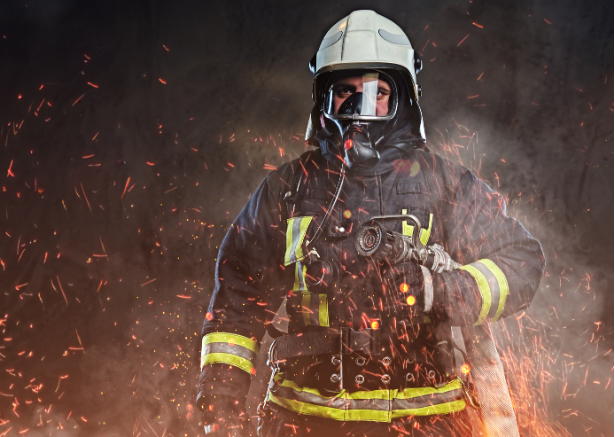
Electrical Maintenance
Electricians require clothing that not only resists flames but also offers protection against electrical arcs. Fabrics treated with flame-retardant chemicals, such as flame-retardant (FR) cotton, are commonly used in this field to protect against arc flashes and other electrical hazards.

Oil and Gas
Workers in the oil and gas industry are exposed to flash fire hazards and require garments made from materials that provide quick self-extinguishing properties and minimal after-burn, such as aramid blends. These fabrics ensure that any ignition is quickly extinguished, reducing the risk of severe burns and injuries.
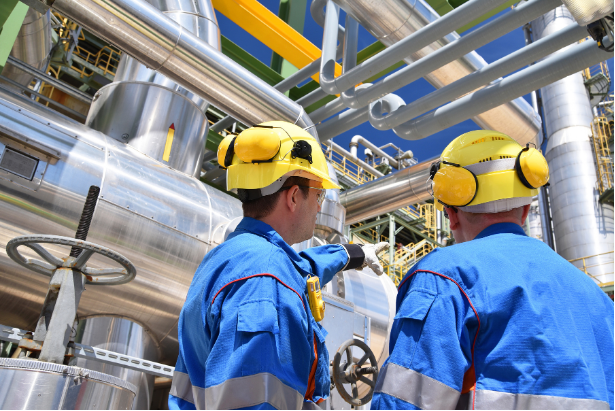
Welding
Welders need durable, heat-resistant fabrics that can protect them from sparks and spatter. Treated cotton and wool are popular choices in this industry because they offer the necessary heat resistance and comfort, ensuring that welders can work safely and efficiently.
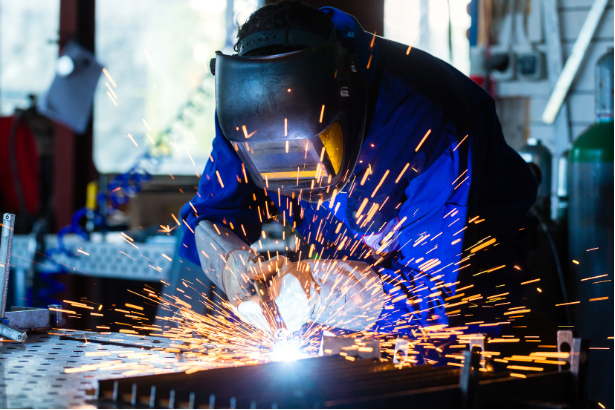
Assessing the specific hazards and protection levels required in your industry will guide you in selecting the most appropriate fire-resistant fabric.
Budget Considerations
Balancing cost with quality and durability is essential when choosing fire-resistant fabrics, so, while the initial investment in premium fire-resistant fabrics may be higher, the extended lifespan and reduced maintenance costs associated make it a more cost-effective choice in the long run.
Not only do high-quality fire-resistant garments tend to last longer, reducing the need for frequent replacements and resulting in cost savings over time, but they also require less maintenance to retain their protective properties. Not to mention, using such higher-end, reliable fabrics ensures that your company meets safety regulations and standards, potentially avoiding costly fines and liability issues.
Supplier Selection
When it comes to choosing where to get tour fire-resistant gear from, it is crucial to ensure you end yp with high-quality garments that meet all the required safety standards. Partnering with reliable workwear suppliers like Clothes2order offers several advantages, from aforementioned quality assurance to product variety, as well as customer support and sustainability.
Conclusion
Ensuring worker safety in high-risk industries is essential, and using the right fire-resistant fabrics is a key factor in maintaining this security. By understanding industry-specific hazards and choosing sustainable, durable fabrics, you can protect your employees (and the planet) effectively. Partnering with reputable suppliers like Clothes2order for your personalised workwear, high-vis workwear, and PPE needs, meanwhile, ensures high-quality, compliant gear that balances cost with long-term safety and sustainability.
Ultimately, investing in the right fire-resistant fabrics not only safeguards your workers, but also promotes a responsible and secure work environment. So, if you have any more questions about maintaining safety in the workplace, don’t hesitate to get in touch or read some more of our articles on our blog.

